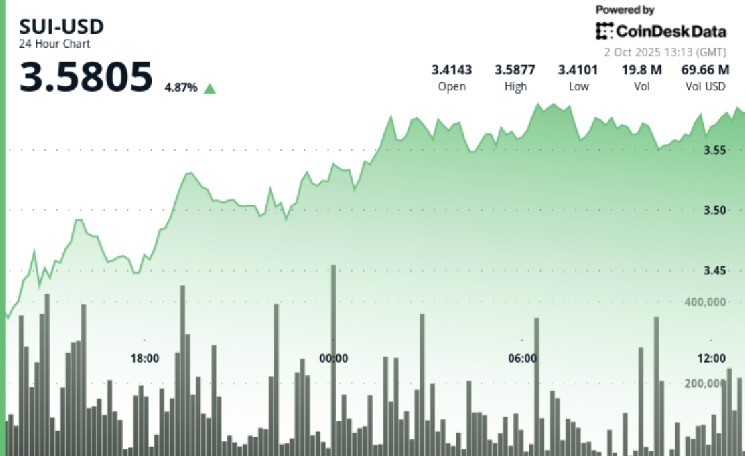
By: Stella L (stella@footprint.network)
Data source: Blockchain game research page
In June 2024, the cryptocurrency market experienced a significant correction, with Bitcoin falling by 7.3% and Ethereum falling by 9.8%. This volatility inevitably affected the blockchain gaming sector, causing the total market value of game tokens to shrink by 28.1%. In addition, the number of daily transactions in blockchain games increased by 8.0%, but the number of daily active users (DAU) decreased by 8.8% to 3 million. Important developments in the industry include extensive discussions around the future of Web3 games, Ronin’s announcement of the upcoming launch of its Layer 2, and significant changes in user engagement in games such as Pixels and Matr1x FIRE. As the blockchain gaming industry continues to evolve, its core focus remains on using blockchain technology to create sustainable and engaging gaming experiences.
The data for this report comes from Footprint Analytics’ blockchain gaming research page . This is an easy-to-use dashboard that contains the most important statistics and indicators for understanding the blockchain gaming industry, and is updated in real time.
Macro Market Review
During June, the cryptocurrency market experienced a correction. The price of Bitcoin fell from $67,730 at the beginning of the month to $62,795 at the end of the month, a drop of 7.3%. The price of Ethereum also fell, from $3,820 at the beginning of the month to $3,444 at the end of the month, a drop of 9.8%.

Data source: Bitcoin and Ethereum price trends
Continued selling pressure from multiple sources has dealt a heavy blow to Bitcoin. On June 24, the Mt. Gox bankruptcy liquidation trustee announced that the repayment of Bitcoin and Bitcoin Cash (BCH) will start in July 2024, which has caused widespread uncertainty in the market about the conversion of creditors' assets into fiat currency and the specific timetable. At the same time, the US spot Bitcoin ETF experienced a net outflow of funds in the second half of June.
Government-level initiatives are also not to be overlooked. A German government agency began liquidating bitcoins confiscated in 2013 and transferred nearly 4,000 bitcoins to exchanges in June. At the same time, the US government also transferred 3,940 bitcoins seized from the wallet of a convicted drug dealer to Coinbase.
While the spot Ethereum ETF in the U.S. market is progressing smoothly, Bitcoin’s weakness seems to have spread to the entire crypto market.
Overview of the blockchain game market
In June, the total market value of blockchain game tokens shrank from $27.2 billion to $19.6 billion, a drop of 28.1%. This significant decline directly reflects the general downward trend in game token prices, which is caused by the sluggish performance of Bitcoin and the entire cryptocurrency market.

Data source: Blockchain game tokens and Bitcoin market value
The average daily number of blockchain game transactions was 8.6 million, an increase of 8.0% month-on-month.

Data source: Daily transaction count of blockchain games
The industry’s overall DAU (by wallet count) fell to 3 million, down 8.8% month-over-month. This unexpected drop was primarily driven by the Pixels game on the Ronin network, one of the largest Web3 games by DAU.

Data source: Number of daily active users of blockchain games
After Pixels migrated from Polygon to the Ronin network in Q4 2023, its DAU increased significantly, reaching a peak of 1 million on May 13. However, its DAU dropped sharply from 976,000 on June 11 to 252,000 on June 19, a drop of 74.2%. In comparison, the average DAU in May was 842,000, while in June it dropped to 647,000, a drop of 23.2%.

Data source: Pixels Daily Active Users
Pixels Chapter 2 was officially launched on June 18. This update not only brings improvements to the gameplay, but also aims to improve the long-term sustainability of the game by optimizing the incentive design and reward distribution strategy. The Pixels team said on social media that they are actively implementing a series of systematic measures to effectively curb robot (bot) activities in the game, and said that "Chapter 2 breaks all robots."
Pixels’ DAU began to recover on June 20, reaching 423,000 DAU at the end of the month. However, we don’t know how many of these users may be evolved robots. Longer observation and data accumulation are needed.
For Pixels, and many Web3 games, ensuring that bot activity is economically unsustainable is critical.
Blockchain Game Public Chain
In June, there were 1,580 active games on various chains, among which BNB Chain , Polygon , and Ethereum led with 22.4%, 19.5%, and 16.1% market shares respectively.

Data source: Percentage of active games on each public chain
Meanwhile, among the 3 million DAUs, Ronin, Polygon, and NEAR continued to lead, but they also faced many challenges. Ronin's DAU share was affected by Pixels, falling from 29.8% at the beginning of the month to 18.4% at the end of the month. As for Polygon, its DAU share also shrank from 15.1% to 8.0% due to a 31.6% month-on-month drop in the DAU of Matr1x FIRE, its largest DAU game.
Oasys' Layer 2 Saakuru Verse has seen significant growth in DAU in the last ten days of June. The successful launch of Copycat Killer, Panic, and Parkour Battle by Web3 game publisher PlayGround has greatly boosted the surge in DAU on Saakuru Verse, from 18,000 on June 21 to 464,000 on June 30, with an average DAU of 379,000 in the last week. If this growth momentum continues, Saakuru Verse is expected to quickly become one of the top three blockchain platforms in terms of DAU.
On the other hand, opBNB also performed well in the last week of June, with an average DAU of 285,000, accounting for nearly 10% of all DAUs.

Data source: Daily number of active game users on each public chain
The public blockchain space is actively strengthening its gaming ecosystem, with specific measures including launching special Grant programs for Web3 game developers. At the same time, building more chains has become a popular strategy. Ronin recently announced plans to build Layer 2 using the Polygon Development Kit (CDK), indicating that popular games such as Axie Infinity and Pixels are expected to run on their own game chains in the future. This move coincides with the strategies adopted by platforms such as Avalanche, Oasys and SKALE. So, will this strategy and similar practices succeed? We will continue to pay attention.
Overview of blockchain game projects
In June, the blockchain game market had a total of 3,289 games, of which 1,319 were active. In particular, 257 games successfully attracted more than 1,000 monthly on-chain users, accounting for 7.8% of all games and 19.5% of active games.

Data source: Number of monthly active blockchain games
Data like this has been around for a while, sparking debate about whether blockchain gaming is dead. While we disagree with such exaggerated assertions, it is important to understand the context. It is worth noting that these data only reflect the number of on-chain users. In fact, many games offer ways to play without Web3 integration (such as without connecting to a wallet), and their game data is basically off-chain, which is difficult to track accurately at this stage. Therefore, the importance of blockchain technology and on-chain data has become increasingly prominent.
We have more chains (Layer 1, Layer 2, Layer 3, subnets, etc.), more games, and more DAU. However, we suggest that we should not only focus on the growth of DAU, but also pay attention to the retention rate of each game. As a core indicator for evaluating the attractiveness of games and the stickiness of real users, the retention rate can more accurately reflect the health and long-term development potential of the game.
For example, although Pixels’ DAU dropped significantly in June, its monthly retention rate has been strong since its migration to the Ronin platform, reaching a high level comparable to or even better than Web2 games. Specifically, Pixels’ average retention rate exceeded 40% in the second month, and in the sixth month, this figure remained above 20%.

Data source: Pixels monthly user retention rate
On the contrary, the retention rate of Matr1x FIRE's new users in April and May was less than 10% in the second and third months. The game faces great challenges in user retention.

Data source: Matr1x FIRE monthly user retention rate
Blockchain games stand in stark contrast to traditional games through unique elements such as play-to-earn, play-and-earn, and play-to-airdrop, but the essential fun of games is always the core driving force. We must be vigilant and not let the excessive pursuit of potential gains overshadow the pure fun of games. Building a long-term sustainable blockchain game ecosystem is crucial to the healthy development of the entire industry. As we emphasized on social media : "Web3 games are not dead, Web3 games are being built."
Blockchain game investment and financing
In June, the Web3 gaming sector raised a total of $43.05 million in 12 funding events, of which the specific amounts of four funding events were not disclosed. This total is not much different from the $44.95 million raised last month.

Investment and financing events in the blockchain gaming sector in June 2024 (Source: crypto-fundraising.info )
The Sandbox has successfully raised $20 million in convertible promissory notes at a valuation of $1 billion, led by Kingsway Capital and Animoca Brands. Over the past year, the Sandbox team’s main focus has been on increasing the quality and quantity of user-generated content (UGC) around the world.
On the other hand, Uniswap Labs announced the acquisition of an on-chain survival game called Crypto: The Game. The game quickly became popular on social media in its first season. In the game, players need to form a tribe and pass various challenges to determine the fate of tribe members. In the end, only the last survivor can win. The Crypto: The Game team chose to join Uniswap Labs to leverage Uniswap's deep resources and experience in blockchain and decentralized finance to further promote the expansion and development of the game.
___________________
The content of this article is only for industry research and communication purposes and does not constitute any investment advice. The market is risky and investment should be cautious.
About Footprint Analytics
Footprint Analytics is a blockchain data solution provider. With cutting-edge artificial intelligence technology, it provides the first code-free data analysis platform and unified data API in the Crypto field, allowing users to quickly retrieve NFTs, Games, and wallet address fund flow tracking data from more than 30 public chain ecosystems.






